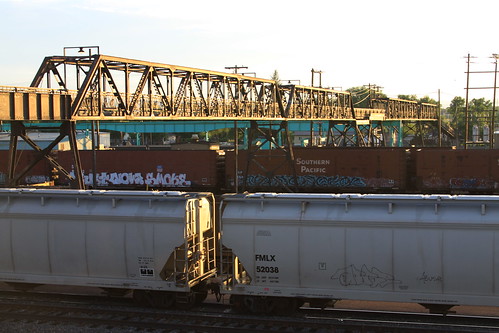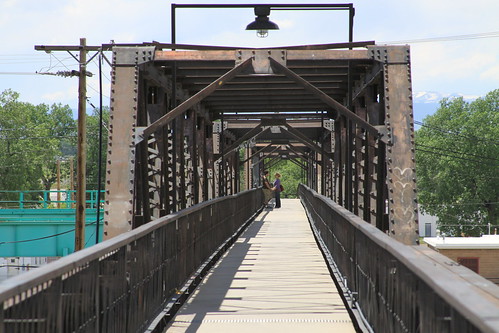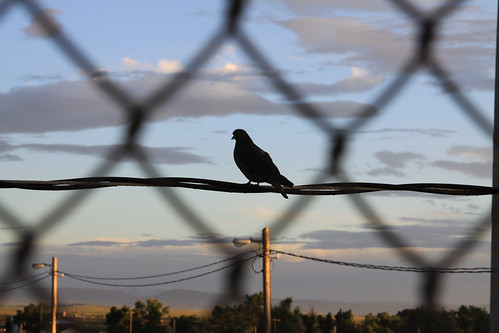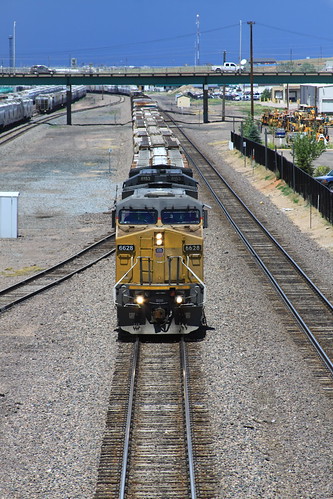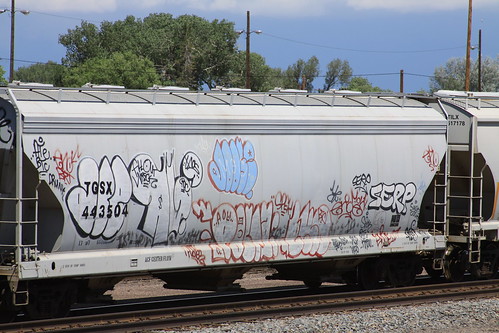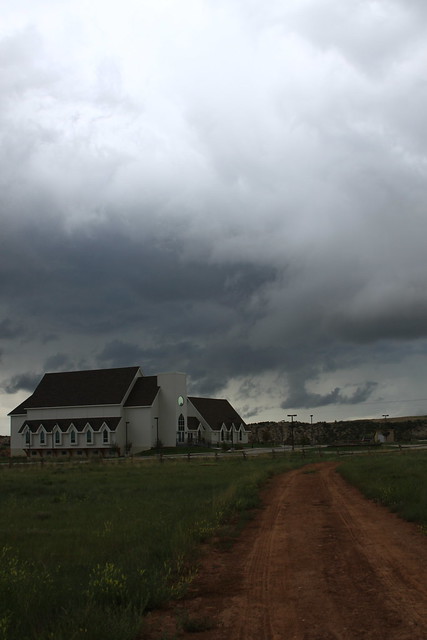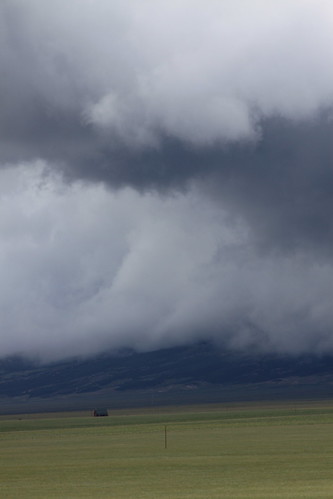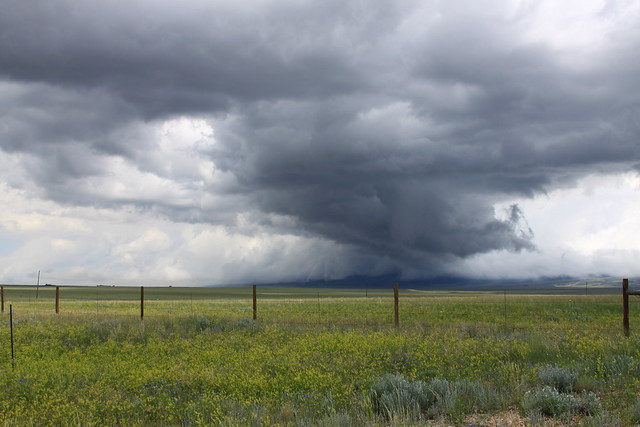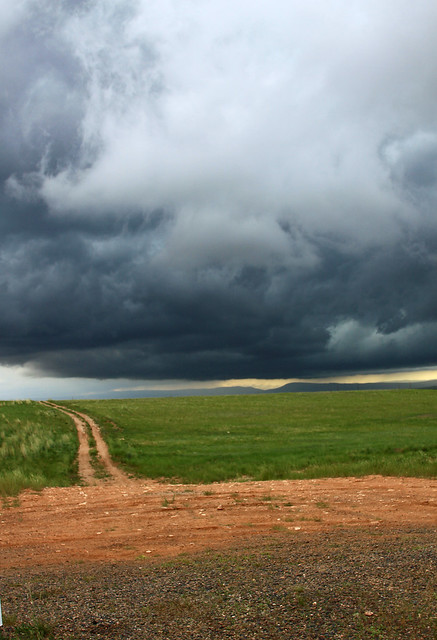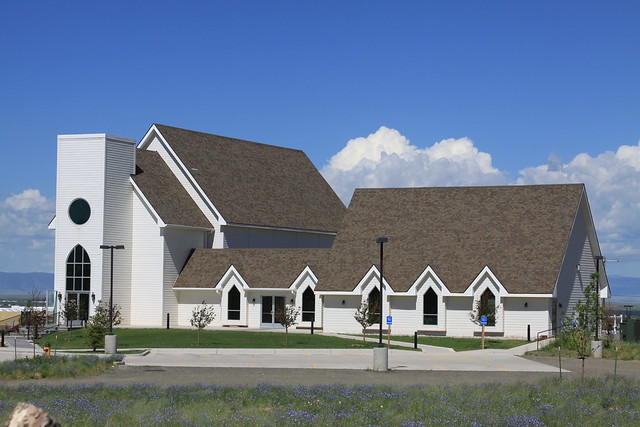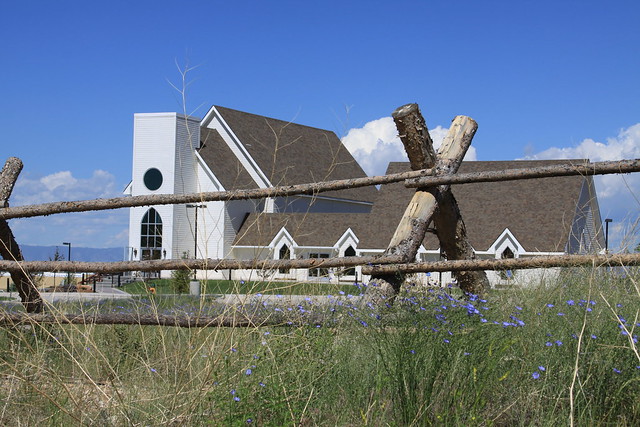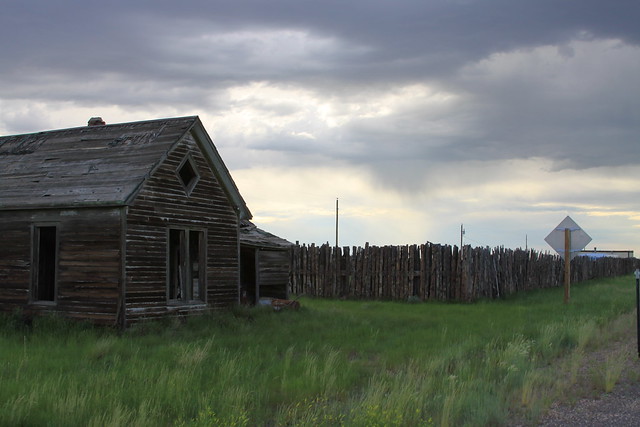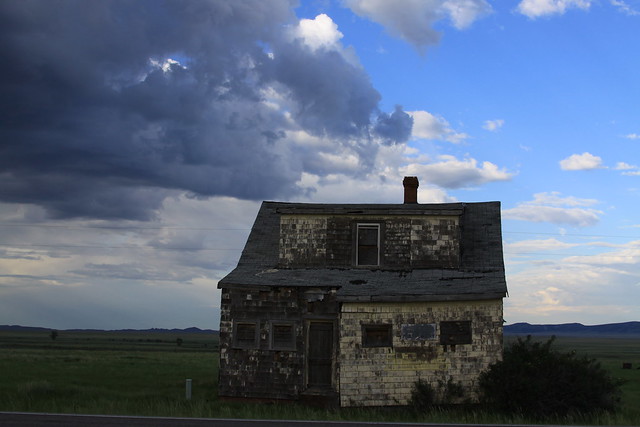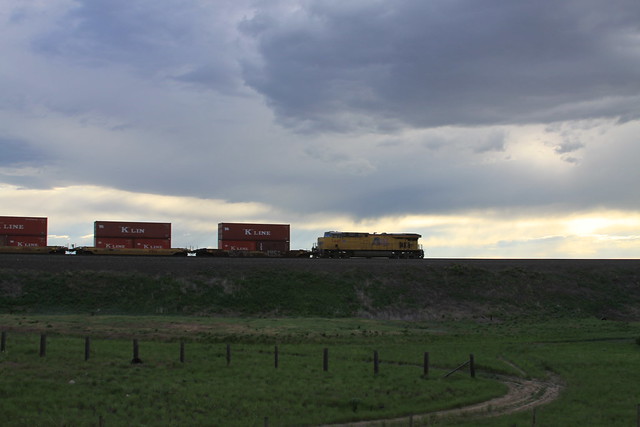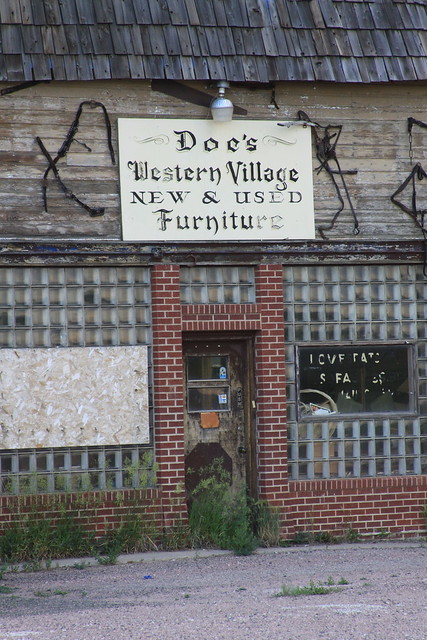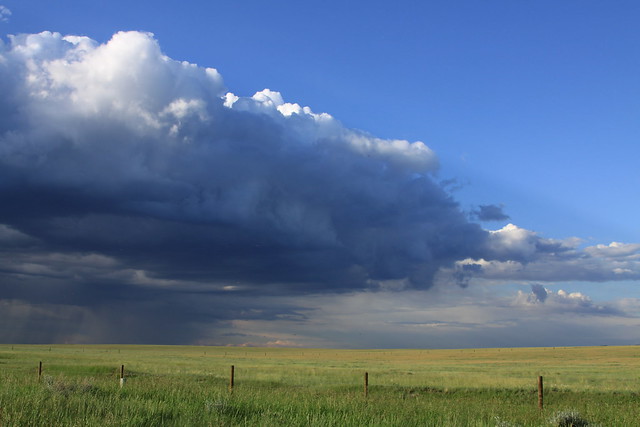Okay, so I was wandering around in the subdivision just across from the Laramie Wal-Mart a while back, just a stone's throw from the city limits sign you see on the Vintage edition of
The Laramie Project. It's exactly what I have nightmares about when it comes to subdivisions: rubber-stamp versions of the American Dream with almost nonexistent lawns, people made out of ticky-tack and all look the same... (oh, wait. That's a Joan Baez song.) I hate neighborhoods that are all stacked together like frosted cupcakes all popped from the same pan: identical, crowded, tiny, with only the sprinkles indicating their difference. They just feel soul-killing to me.
Anyhow, I was tootling my way up the roads to the end of the subdivision to get a better look at this new church just off of Grand Avenue, as I had been taking pictures of churches that day, and here's what I saw:
Oh, wait-- my bad. That's not what I
really saw when I dropped by this church. The first thing I
actually saw was this:
**shiver**
I can remember this congregation from my undergraduate days at UW. This is a reformed church for sure, and might even be Baptist (I'm pretty sure it used to be, but I can't remember if they changed.) A friend of mine went to this church when they were still in a tiny stucco white building not far from campus, and they tended to run conservative to fundamentalist back then. Then the church split over some doctrinal issues which were never really clear to me, although they seemed really important to my friend at the time. This building is new to me, constructed sometime after 2000 because I can remember the flap about the remaining members selling their old building to the Islamic association. It was built at least two years
after Matt Shepard was killed-- and they
chose to put a buck fence around it. Um, what am I supposed to do with this?
Okay, so I know I'm the same person who thinks that
the demonizing of buck fences is unfair, because I've always rather liked them, and they're unique to my home territory. (I mean, imagine how pissed off the French would be if for some reason the Eiffel Tower suddenly became an international symbol of hate. That's how I feel.) This fence wouldn't bother me near so much if it weren't for the location. You see, If I turn my back on this church and look away from their roundabout, I can sight my eyes down this road like the barrel of a gun and see the exact spot where Matt was murdered.
They're on the same damn road. The only difference is that it turns to a dirt track about a third of the way down its length. This church sits on the pavement, tucked back in the corner of the cookie-cutter subdivision; Matt was beaten just off of to one side of a the dirt track in the scrub.
Okay, so I have to confess-- my ambivalence meter hit the roof when I saw this. On the one hand, it's their land and they can put up whatever the heck kind of fence they want, I guess. And, up to this point, I
suppose I would have even applauded someone who fought the stereotype and reinforced the good side, the rugged and beautiful side, to the buck fence. There are, after all, a lot of split-rail fences in this neighborhood, so maybe they're just trying to blend in, right?
Right?
There are a lot of reasons to choose a buck fence. For one, it
is rather decorative, and it adds to the "little white chapel in the wilderness" motif (although the church is too big and modern to really pull it off.) Maybe there's a neighborhood association covenant that says you can't have chain-link or picket for all I know. And, you don't have to paint it, and there's no maintenance needed... and maybe they don't buy into the buck fence as a symbol of hate. I kind of wish I didn't either, so that's understandable. And, maybe they don't know where Matt died, though I find this impossible. If you have an infamous crime scene practically in your neighborhood, you
know.
All these justifications aside, one thing seems clear to me regardless: they don't give a crap whether or not a gay person feels welcome at their church, because regardless of how the congregation might
feel about buck fences, the GLBT community in Laramie has one very big, negative association with them. And for a community with an already embattled relationship to the church, walking up to a church with a symbol of a gay bashing encircling it (and a fifteen minute walk away from the murder location) certainly isn't going to make it any easier. To be honest, that probably never even occurred to them because, in my experience, most of the churches on my end of the faith spectrum don't spend much time thinking about gay people at all. Maybe the nice people in this particular church would prove me wrong; I'm certainly open to the possibility, but after ten years of battling it out with others, I'm not holding my breath.
I would have to sit down with the pastor or a couple of deacons over a cup of coffee and chat candidly with them to really see what their thought process was when they decided to mark off their property with that fence; and to be honest, I would really welcome the possibility of that kind of conversation if they'd be interested. I bet they have a unique perspective on that location, how the neighborhood relates to it, and how they negotiate with the space where they live and the knowledge of what happened down the road. And that conversation would be far more productive than assuming terrible things of people I don't really know, especially when they might have very complicated and interesting things to say if I'd let them. And, since they still live in that community and I don't, they might have a much, much more nuanced and interesting approach to all this. I can't really
know until I let them speak for themselves, and at the moment I can't.
The only thing I can really know for certain is this: for all my pontificating about buck fences and disliking what they've come to symbolize for so many, apparently I can't escape that association between the buck-and-rail and brutality, either. I can dislike the association, but I can't get rid of it. It's a part of my imagination now, making me flinch at something as seemingly innocent and picturesque as a rustic fence in front of a clean, white mission church.



